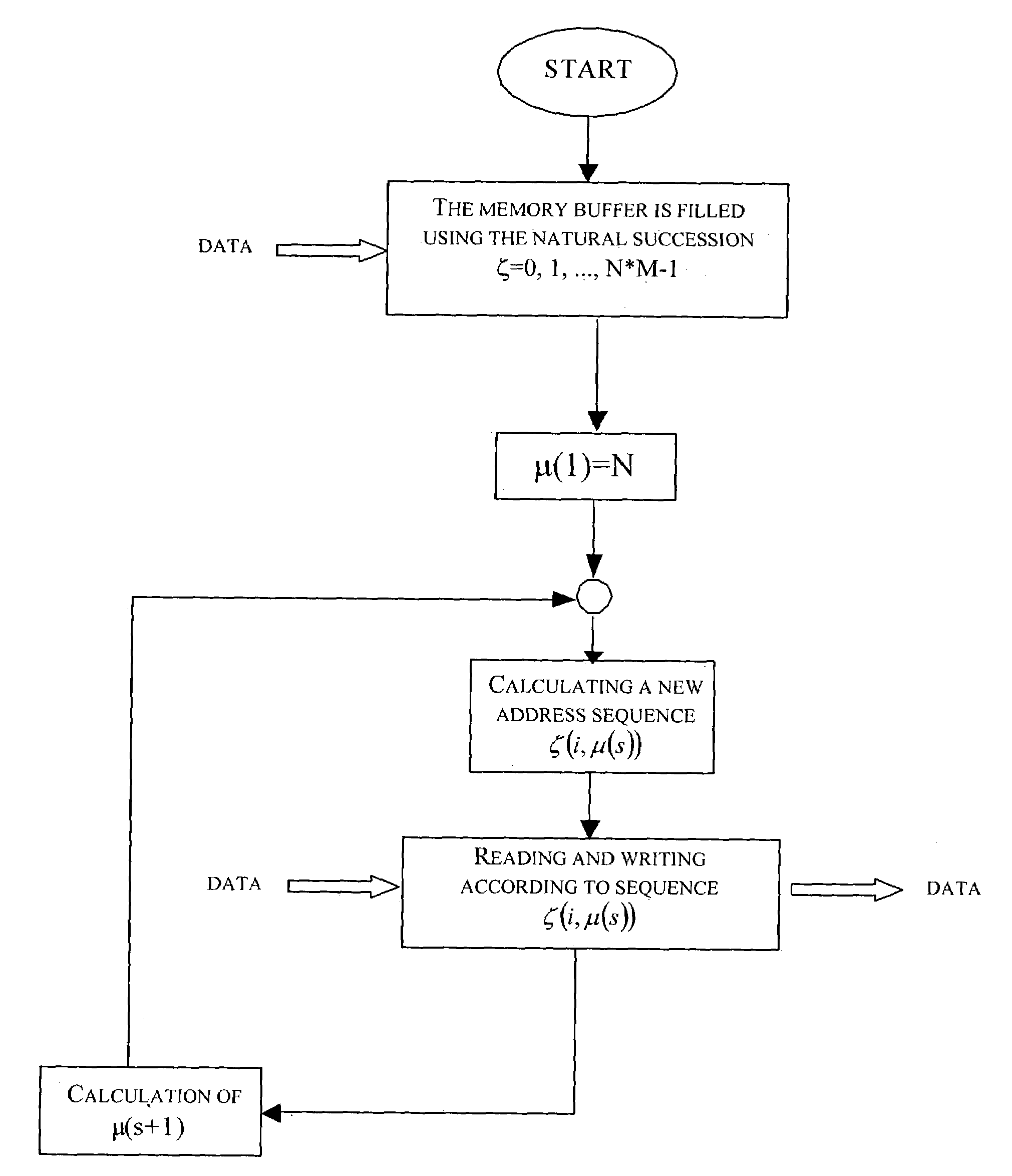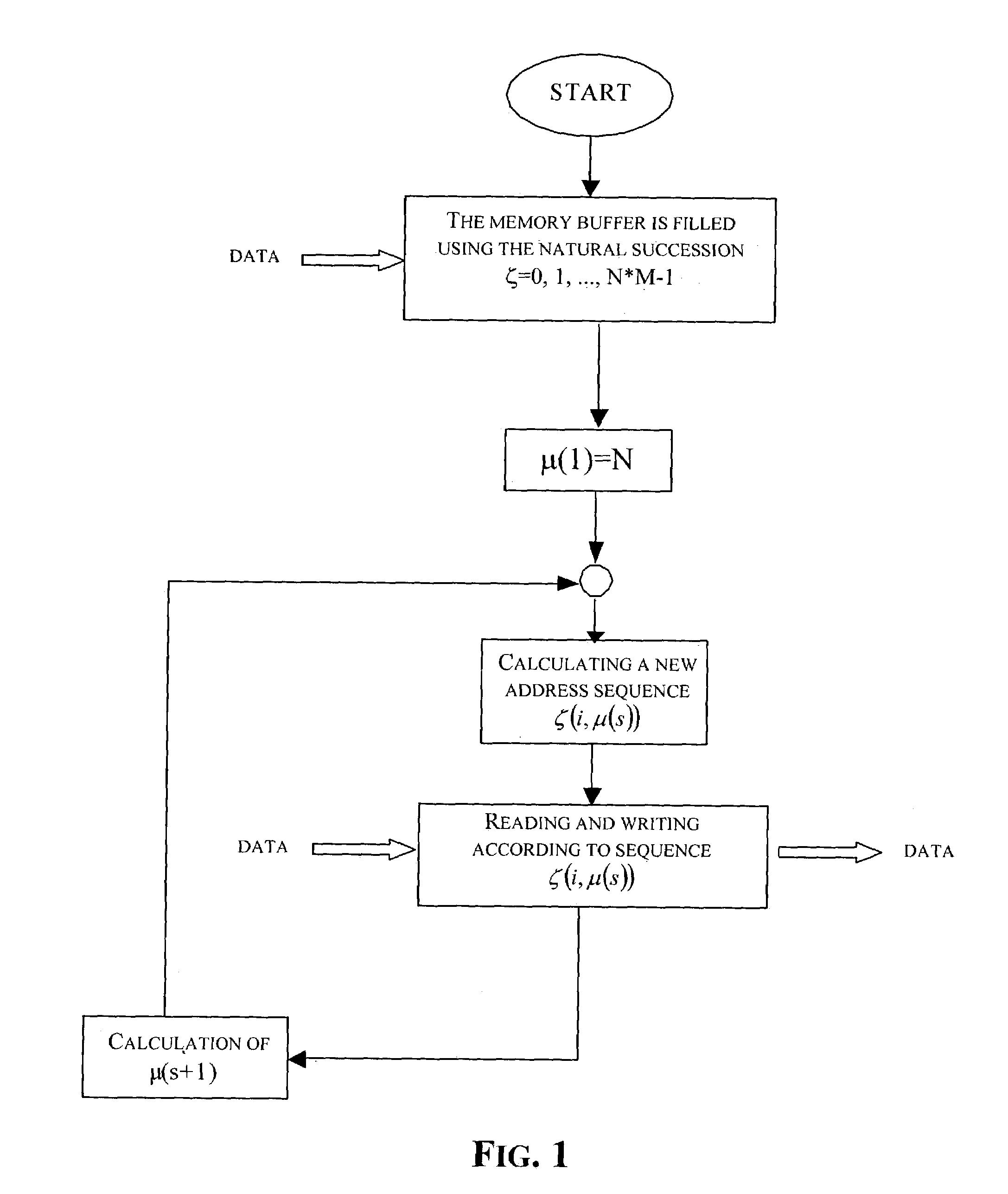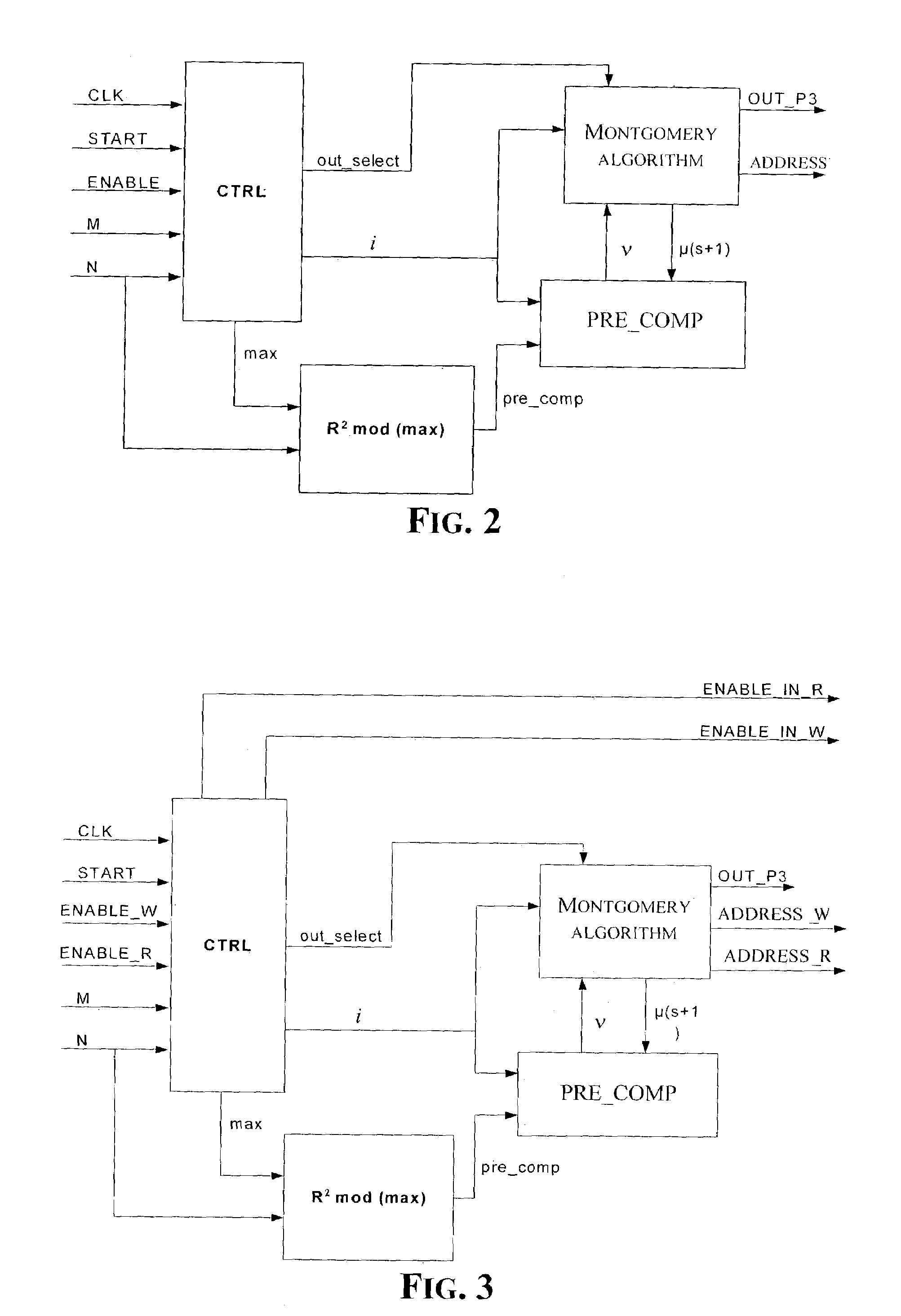Method and circuit for generating memory addresses for a memory buffer
a memory buffer and sequence technology, applied in the field of interfaces, can solve the problems of burdensome technique, burdensome approach, and the system of the above noted european patent is very straightforward to form but not very efficien
- Summary
- Abstract
- Description
- Claims
- Application Information
AI Technical Summary
Benefits of technology
Problems solved by technology
Method used
Image
Examples
Embodiment Construction
[0034]According to the method of the invention, the sequence of addresses is obtained with an iterative algorithm that uses an auxiliary parameter μ(s), which is updated at each iteration. A basic flow chart of the method of the invention is depicted in FIG. 1. The initial address sequence is the natural succession 0, 1, . . . , N*M−1 and the auxiliary parameter is set to N:
μ(1)=N
[0035]A new sequence of addresses is calculated and data for the printer swaths are read from and written in the memory buffer. A new value of the auxiliary parameter μ(s+1) is calculated and is used for calculating the next address sequence.
[0036]The address sequence ζ(s) is calculated at step s using the value of the auxiliary parameter at step s according to the following equation:
ζ(i, μ(s))=(i·μ(s))mod(N·M−1) (2)
wherein i=0, 1, . . . , N*M−2. As previously stated, the address of the last memory location N*M−1 is always the last address of every sequence:
ζ(N·M−1, μ(s))=N·M−1 (3)
The successive value of ...
PUM
 Login to View More
Login to View More Abstract
Description
Claims
Application Information
 Login to View More
Login to View More - R&D
- Intellectual Property
- Life Sciences
- Materials
- Tech Scout
- Unparalleled Data Quality
- Higher Quality Content
- 60% Fewer Hallucinations
Browse by: Latest US Patents, China's latest patents, Technical Efficacy Thesaurus, Application Domain, Technology Topic, Popular Technical Reports.
© 2025 PatSnap. All rights reserved.Legal|Privacy policy|Modern Slavery Act Transparency Statement|Sitemap|About US| Contact US: help@patsnap.com



